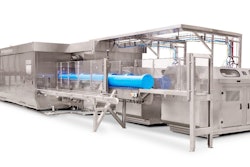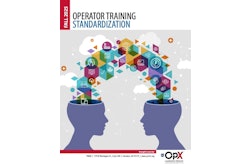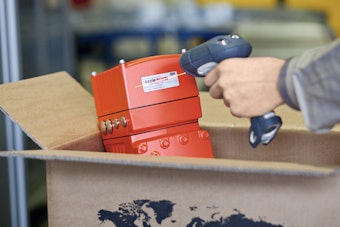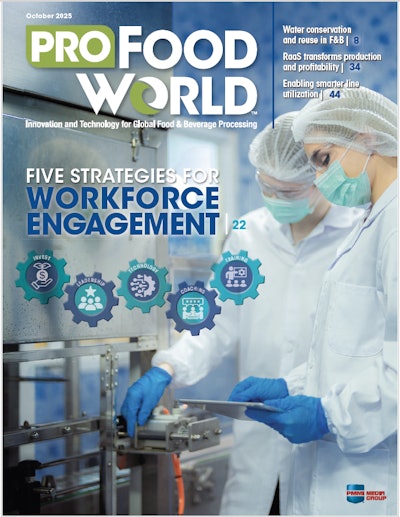The toll of a food safety failure extends far beyond the initial problem. Whether it brings costs associated with food waste, production delays, regulatory consequences, or loss of consumer trust, suffice to say a recall is best avoided.
Food safety incidents have seen a rise in recent years. Recalls from Salmonella, Listeria, and E. coli rose by 41% from 2023 to 2024, according to a February report from Public Interest Research Group (PIRG). Nearly 1,400 people fell ill from contaminated food in 2024, with 98% of those reported illnesses stemming from 13 outbreaks, according to the PIRG report. Of those reported illnesses, over 500 were hospitalized or died, compared to about 240 hospitalizations or deaths from contaminated food in 2023.
Issues have continued through 2025, with the FDA reporting 217 recalls, market withdrawals, or safety alerts for food and beverage products so far this year.
The public is taking notice to this uptick in incidents, heightening scrutiny for food processors to better comply with food safety standards. In a 2025 survey commissioned by GS1 US, 93% said they are concerned about how frequently recalls occur. This concern leads to real changes in behavior, as 60% of respondents shared they’ve avoided an entire food category after a recall, and 59% said they’ve been hesitant to purchase the same product or brand again after a recall.
Regulatory oversight in this space is lacking, according to a new report from Farm Forward. The nonprofit advocacy group revealed that major poultry companies have repeatedly failed Salmonella inspections without facing consequences from the USDA.
The report found that companies including Perdue, Foster Farms, Cargill, Butterball, and more have repeatedly received the USDA’s Category 3 rating for Salmonella contamination in certain products and continued to sell those products. The USDA FSIS cannot shut down plants for repeated contamination, stop contaminated products from entering the food supply, or issue recalls, leading to the lack of enforcement, Farm Forward says.
“The USDA should be required to follow the good example of the FDA,” says Andrew deCoriolis, Executive Director at Farm Forward. “The FDA initiates recalls if it discovers Salmonella-contaminated eggs at the market. But the USDA knowingly allows groceries to sell meat that comes from plants that USDA’s own testing shows have high levels of Salmonella contamination. Regulations need to change.”
If USDA FSIS standards around food safety aren’t effectively enforced, it’s up to producers to police their own operations and avoid subsequent foodborne illnesses and reputational damage.
Some food processing equipment suppliers are recognizing this demand and offering the solutions and strategies processors need to ensure food safety. Here is how three solution suppliers are equipping the industry and helping processors to meet the moment.
Fortress Technology: How to optimize your food safety plan
Inspection system supplier Fortress Technology in a recent release offered five tips for processors to better align with the FDA’s New Era of Smarter Food Safety blueprint.
The blueprint builds on the Food Safety Modernization Act, setting goals for producers to strengthen food safety culture and increase digitalization and traceability of operations, and updates Preventative Control planning guidelines. Fortress suggests producers will need to update their food safety plans to ensure they remain competitive in a more proactive food safety culture.
“Consistently high standards of food safety must be kept throughout the entire food supply chain. The industry is not relying on simple quality checks anymore,” says Eric Garr, Regional Sales Manager at Fortress technology. “Preemptive, preventative measure controls, corrective actioning, accurate and regularly updated documentation, and inspection systems all play their part in this new era of food safety.”
To revamp food safety plans for FDA compliance, Fortress recommends that food producers:
- Rate the risks: Processors should conduct hazard analysis to identify any food safety hazards in their operations. Fortress suggests the use of risk assessment tables to gauge the likelihood and severity of all potential hazards, ranking them by risk level. Processors can use this information to determine the appropriate measure to take for each hazard.
- Monitor effectiveness: Once preventative measures are established, producers should regularly track their effectiveness to ensure proper execution and food safety. Monitoring methods can include routine logging, inspections, and audits to ensure standards are met, and flag when measures may be failing.
- Digitalize documentation: Well-established documentation is an integral part of a food safety plan. Fortress says any documents relating to proof, process, and problems should be maintained and stored safely. One way to do this effectively is through digital storage.
“Digitalizing record-keeping eliminates many of the cumbersome functionality concerns food manufacturers usually encounter with paper records,” says Garr. “Processes that have largely been paper-based can utilize digital record-keeping as a fundamental step toward building a sturdier, safer supply chain and reporting process.” - Invest wisely: Facilities with modern food safety management platforms and digital record-keeping capabilities are better positioned to control risks and deliver safe, reliable products. When it may seem that multiple systems are necessary to accommodate stricter preventative control measures, Fortress recommends considering options: a single multi-lane or combination inspection system might offer improvement in a smaller footprint.
- Prepare for the unexpected: Processing pressures, industry trends, and supply chain considerations have potential to enhance or disrupt food safety. Fortress says food safety improvements depend largely on industry collaboration, preempting food safety risks, and using smart technologies to stay proactive.
Poka data transparency to support food safety
Transparency can be a powerful tool to maintain food safety. With real-time knowledge of tasks completed and conditions met, processors can operate more confidently.
Connected worker platform provider Poka has launched Huddle Boards, a digital visual management tool that can help to deliver operational transparency for processors, the company says. It replaces traditional whiteboard-based team meetings with a real-time dashboard covering various operational data.
Huddle Boards shares KPIs around safety, quality, delivery, and people under a single interface, allowing processors to track issues and corrective actions as they happen.
“With Huddle Boards, managers finally get the visibility and accountability that traditional whiteboards could never deliver,” says Alex Leclerc, CEO of Poka. “Every issue, action, and escalation is tracked in real-time and historically, so nothing slips through the cracks. It transforms daily management into a transparent, data-driven process everyone can rely on.”
The system features customizable pillars to follow different priorities around the plant, including thresholds and color-coded alerts for when conditions surpass them. Tasks and issues are tracked for current status, including assigned ownership. A historical and monthly view allows processors to look back on patterns and support continuous improvement.
These features combined into a digital platform allow processors to gain a clear view on operations, where tasks are running smoothly, and where things are being missed, helping to spot and remedy any potential food safety concerns.
Best practices in food safety and sanitation from Goodway Technologies
Maintenance and cleaning solutions provider Goodway Technologies is also keeping a close eye on the current food safety landscape.
“The rise in food recalls is a reminder that there can be vulnerabilities within the food industry and it’s our responsibility to strengthen our commitment to consumer health,” says Evan Reyes, Global Director of Sales Sanitation Division at Goodway Technologies. “Implementing proper safety protocols and improving overall sanitation practices can help companies protect their customers and their brand.”
Goodway recently shared a set of best practices for food safety and sanitation in processing operations, including:
- Testing and quality control: Conduct regular pathogen screening and environmental monitoring throughout processing operations. Processors can achieve real-time traceability with ERP systems and IoT devices, tracking product conditions and quickly identifying issues to resolve.
- Risk assessment: Use the Hazard Analysis Critical Control Points (HACCP) approach to find biological, chemical, and physical hazards from raw material production through distribution. Once those risks are identified, set preventative measures to mitigate them.
- Food safety and allergen management: Processors should regularly update their standard operating procedures (SOPs) to ensure hygiene, temperature control, and prevention of cross-contamination. This includes deploying proper cleaning equipment and protocols to mitigate pathogen and allergen risks.
- Employee engagement and training: Don’t let food safety training be a one-time thing: Provide ongoing education on food safety fundamentals including hygiene practices, food handling procedures, and risk identification. Well-trained employees are the first line of defense against food safety lapses.
Equipped with these best practices, along with food safety advice from Fortress and digital tools like Poka’s Huddle Boards, processors can work to eliminate any guesswork out of food safety and operate with confidence.




















